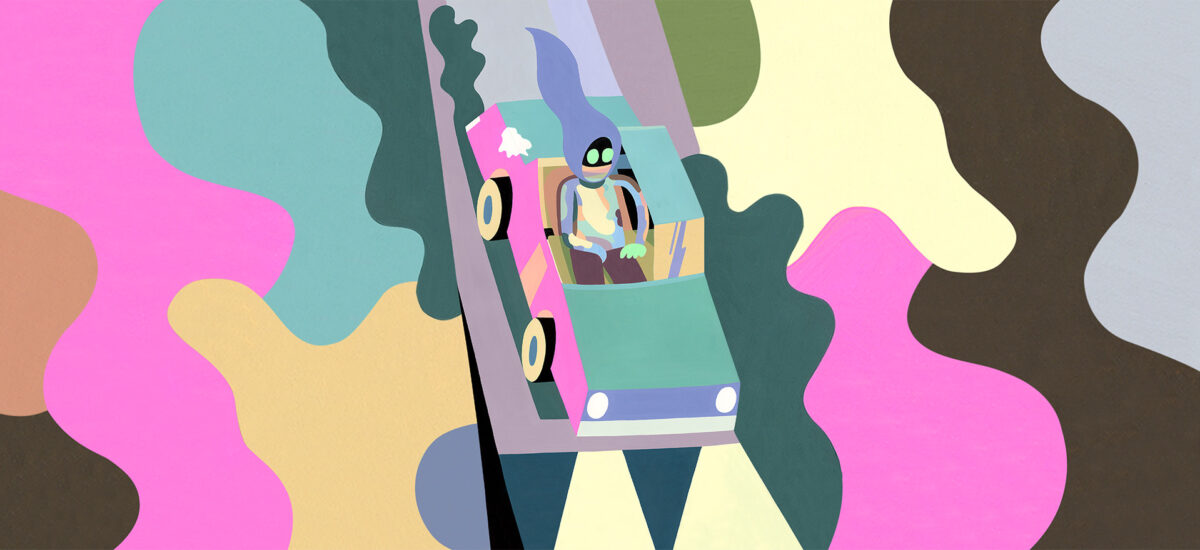
Jazz rap, also known as jazz hop or simply “jazz hip-hop” is a style of hip-hop music that takes inspiration from jazz music. Jazz rap is a broad church in that jazz rap records can be electronically produced via samplers and synths, or feature live instrumentation. Some acts use a live band for accompaniment, or a more traditional DJ-based approach.
Jazz rap has been a prominent force in hip-hop since the late eighties, and many of hip-hop’s most-lauded producers have made songs that are heavily jazz-influenced.
In this beginner’s guide to making a jazz rap beat we’ll show you how to make drum, chord, bass and lead parts that will combine to form a suitable instrumental backing to a jazz rap vocal that sounds like this:
Jump to these sections:
Follow along with KARRIEM RIGGINS DRUMS, the brand new Play Series percussion instrument inspired by West Coast hip hop, jazz, R&B, and beyond.
What is jazz rap?
Hip-hop and jazz share a deep connection, rooted in improvisation and cultural expression. While the first hip-hop records might have been primarily inspired by funk and disco, rap and jazz have a relationship that precedes the birth of hip-hop itself.
One can see the roots of jazz rap in the spoken-word music of Gil Scott-Heron and The Last Poets, but most explicitly—in both senses of the word—in the jazz-backed poetry of Iceberg Slim’s “Reflections” album.
Slim’s almost Shakespearean spoken word delivery and gritty tales of street life was an influence on early gangsta rappers such as Ice T, and in the late 80s jazz’s musical influences would start to become more prominent in hip-hop.
Stetsasonic’s “Talkin’ All That Jazz” from 1988 uses a replayed version of the bass line from Lonnie Liston Smith’s jazz-funk classic “Expansions,” and the group were one of the first hip-hop acts to perform with live instrumentation.
Guru of Gangstarr was outspoken in his appreciation of jazz music on tracks such as 1990s “Jazz Thing.”
The influential Native Tongues collective became increasingly jazz-inspired in the early 90s with tracks like A Tribe Called Quest’s “Check The Rhime” from 1991:
By this point jazz had become one of hip-hop’s most overt influences, with jazzy hip-hop releases appearing from many of hip-hop’s greatest proponents including J Dilla, Ghostface Killah, and Guru’s Jazzmatazz project.
We’re going to use the new Play Series instrument from Native Instruments, KARRIEM RIGGINS DRUMS. Karriem Riggins is a renowned jazz drummer, hip-hop producer, J Dilla and Madlib collaborator. His new instrument is designed for achieving big, punchy hip-hop beats with ease, full of great jazz drum samples.
In this beginner’s guide to making jazz rap we’ll show you how to make a jazz rap beat with slapping drums, big bass, smooth chords and an expressive lead guitar line using KARRIEM RIGGINS DRUMS as well as ALICIA’S KEYS in KONTAKT 7, plus iZotope Ozone 10 and iZotope Vinyl.
How to make a jazz rap beat
1. Drums
Begin by setting your DAW to a laid-back 81 BPM.

Load up KONTAKT 7 on a new instrument track, and select the KARRIEM RIGGINS DRUMS instrument.
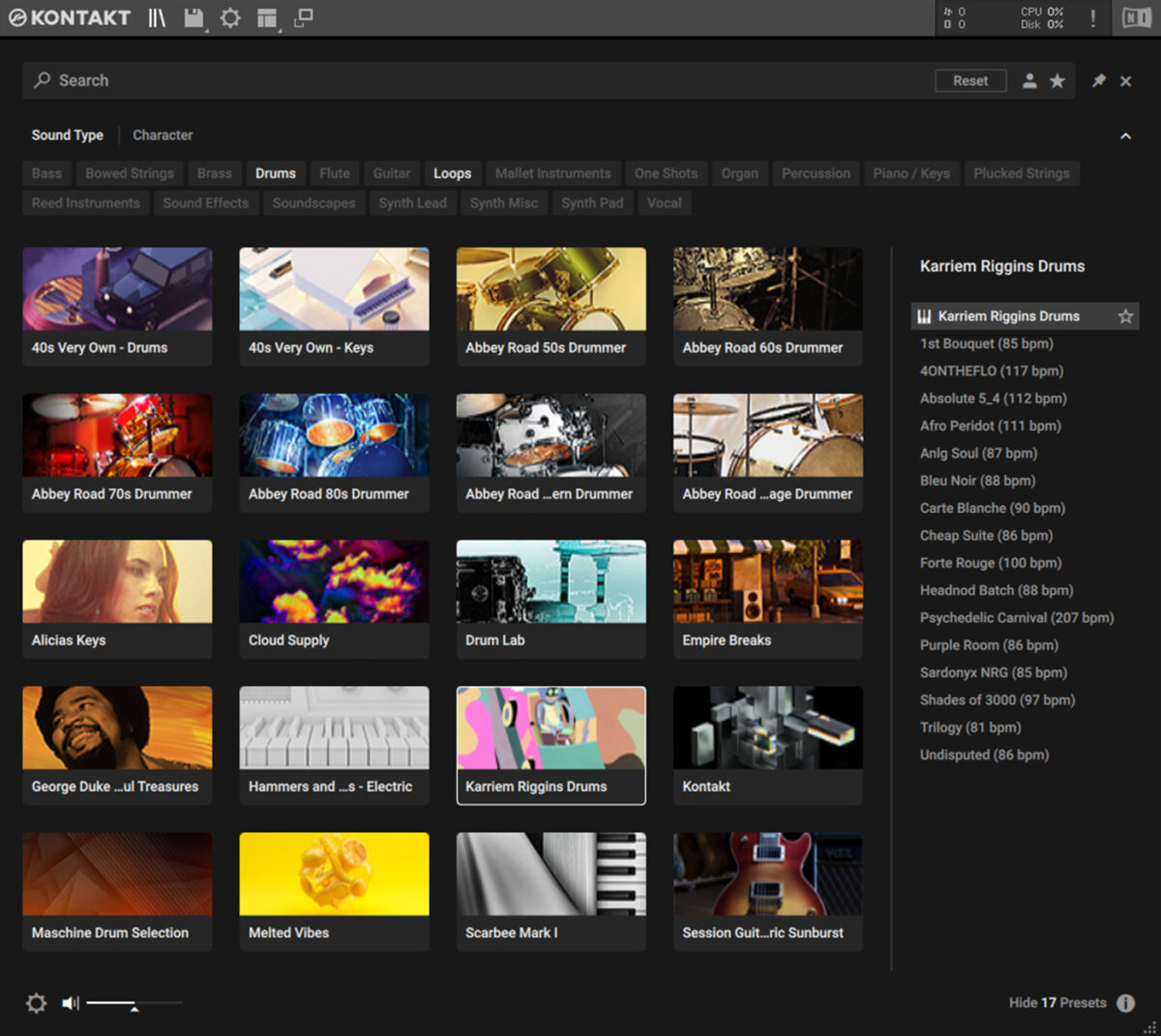
In KARRIEM RIGGINS DRUMS, click the patch name to bring up the list of available kits, and select the 4ONTHEFLO kit.
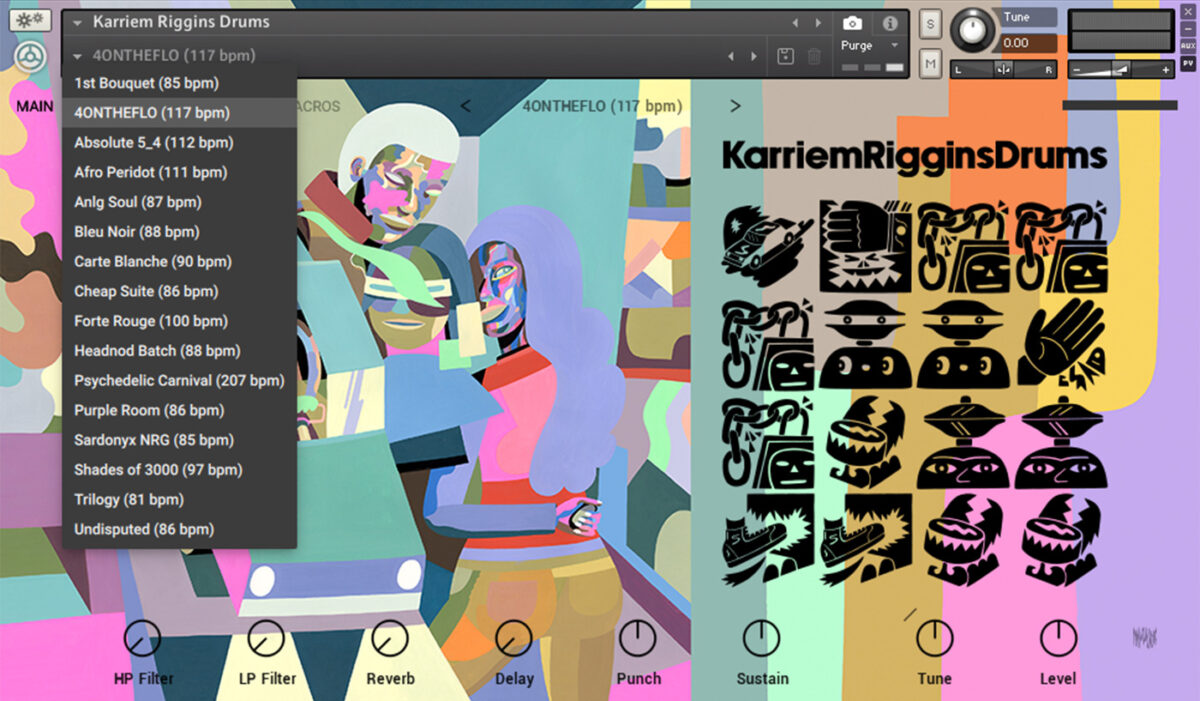
Start by placing D1 and D#1 snares on the second and fourth beat of the bar. We’re going to use velocity values of 100 for all our instruments, unless otherwise indicated.

Now add F#1 hats on eighth notes.
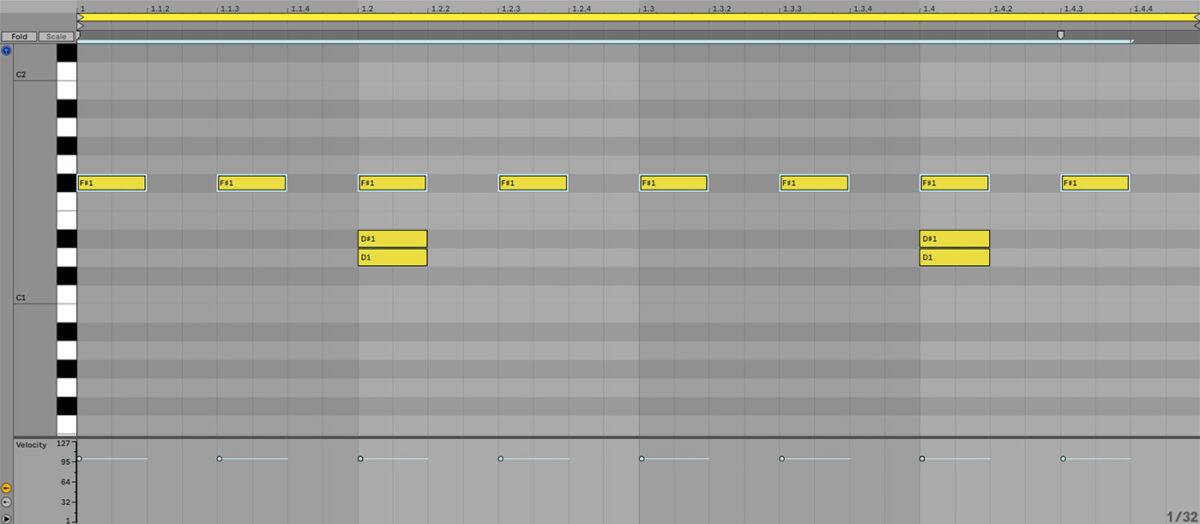
Add a touch of swing by turning off your DAW’s snap to grid function, and moving the hats on the second and fourth beat of the bar nearly 1/32nd note to the left. This will give the beat that shuffling jazzy hip-hop feel.
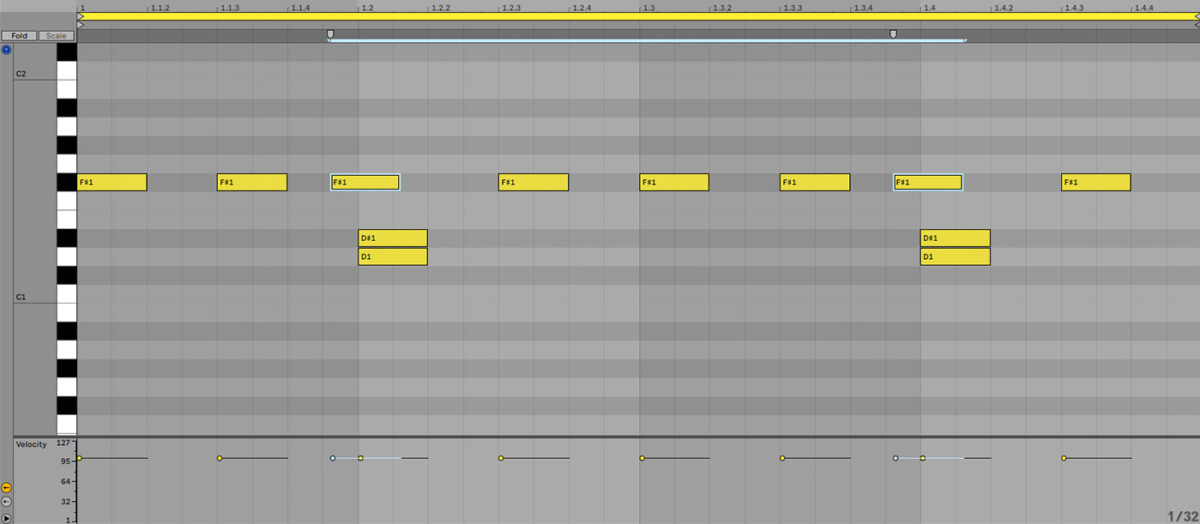
Add C1 kicks on the first and third beats of the bar.
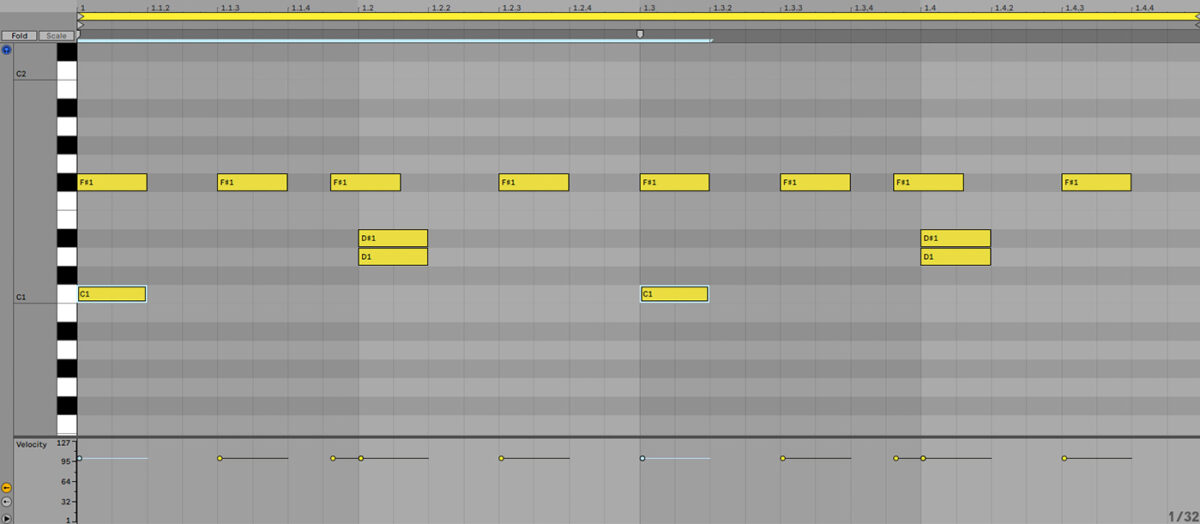
Let’s add another touch of shuffle with a D1 snare that plays just before the last 1/32nd note of the second beat. Use a velocity of 75 for this hit so that it has that ghost snare feel.
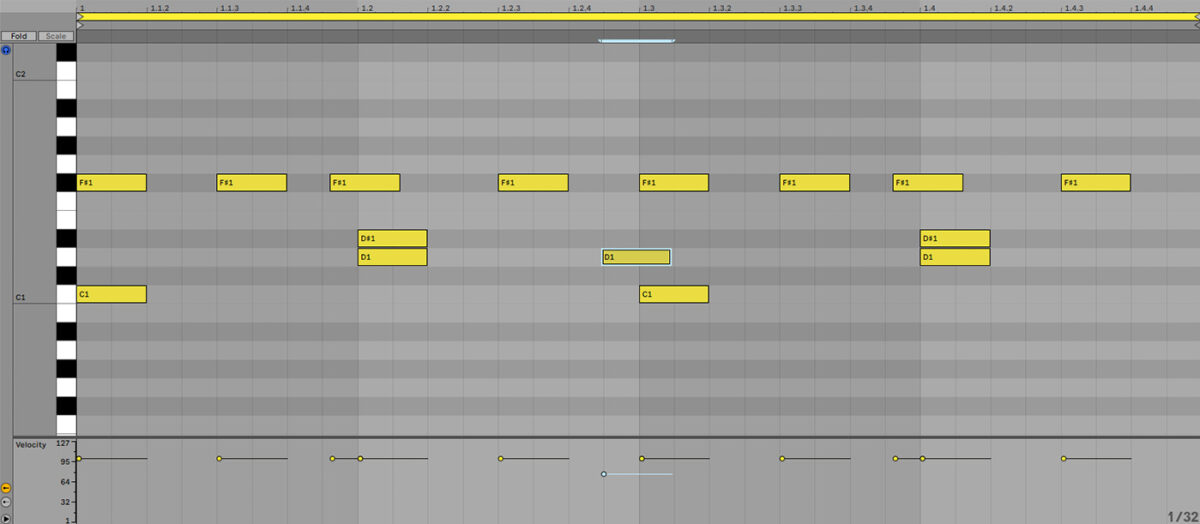
Loop this clip out for four bars.

2. Chords
Now we have a drum beat, let’s add some music. We need some chords as a foundation for the rest of the musical elements, so let’s bring up a smooth piano sound to create a jazzy chord progression. ALICIA’S KEYS is a great choice for this, but you can use any piano sound you like.
Add a new instrument track with KONTAKT 7, and load up the ALICIA’S KEYS instrument.

Set this track to -5.8 dB.
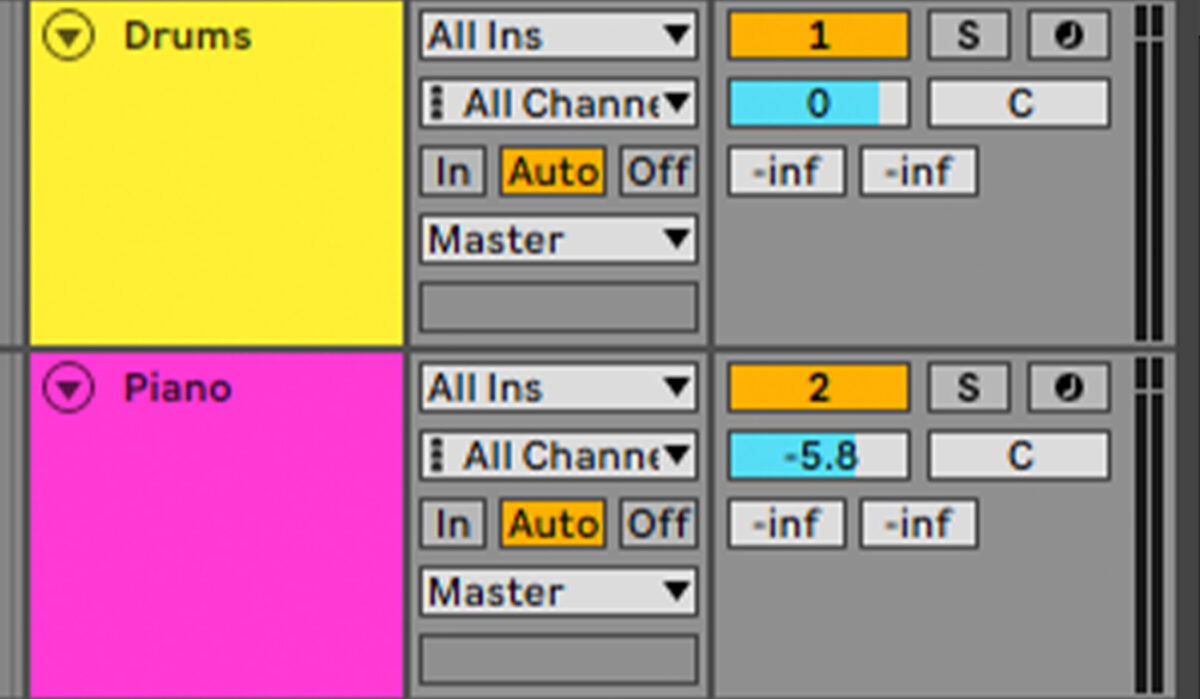
Using a velocity level of 64, program in a chord progression that hits C major 7, E minor with a G in the bass, G minor with an A# in the bass, F major with a G in the bass, C major 9, G major 9, G minor 9, and G major 9.
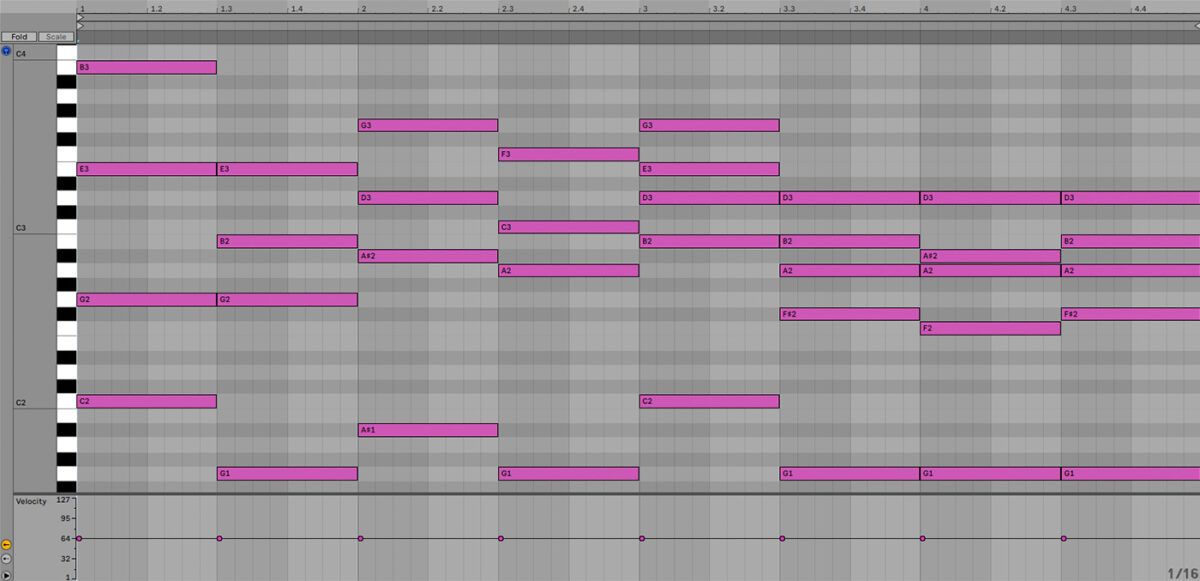
This gives us a harmonically interesting movement that complements the smooth piano sound we get from using a relatively low velocity value.
3. Bass
Now we have a chord progression to work with, let’s add a bassline. For this we’re going to use the KONTAKT 7 Factory Library’s Jazz Upright bass preset, but feel free to use the bass sound of your choice.
On a new instrument track add KONTAKT 7. Select the Bass and Upright tags, and load the Jazz Upright preset.

Set the track’s volume to -3.6 dB.
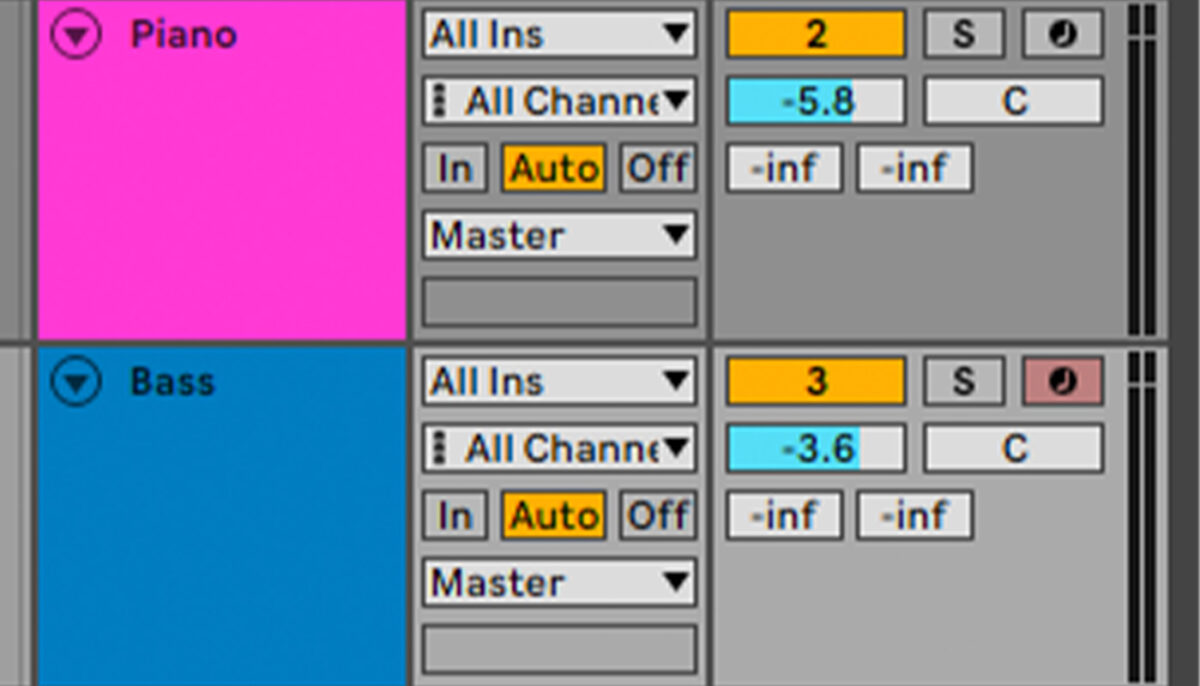
Sequence a bass line that plays C2, G2, G1, A#1, G1, C2, G1, A#1 and G1. This plays on 1/2 notes, apart from the G2 which plays on the second eighth note to provide a little interest at the start of the chord progression.
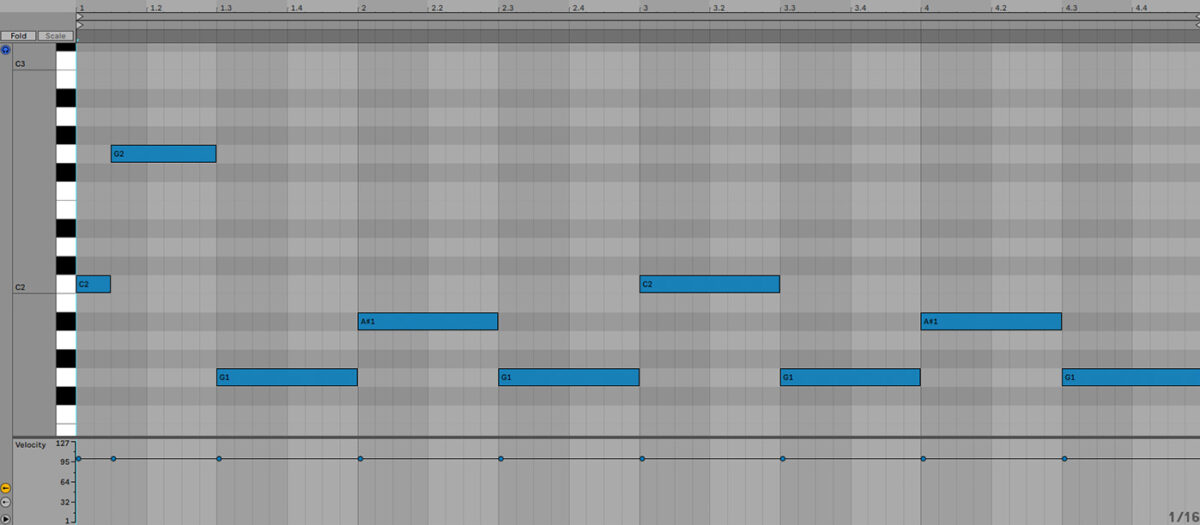
4. Lead
Let’s add a lead line next. For this we’re going to use KONTAKT 7’s Factory Library Jazz Guitar preset, though you can use any instrument you like.
Add a new instrument track and load up KONTAKT 7. Click the Guitar and Jazz tags, then load up the Jazz Guitar preset.

Set this track to -10 dB.
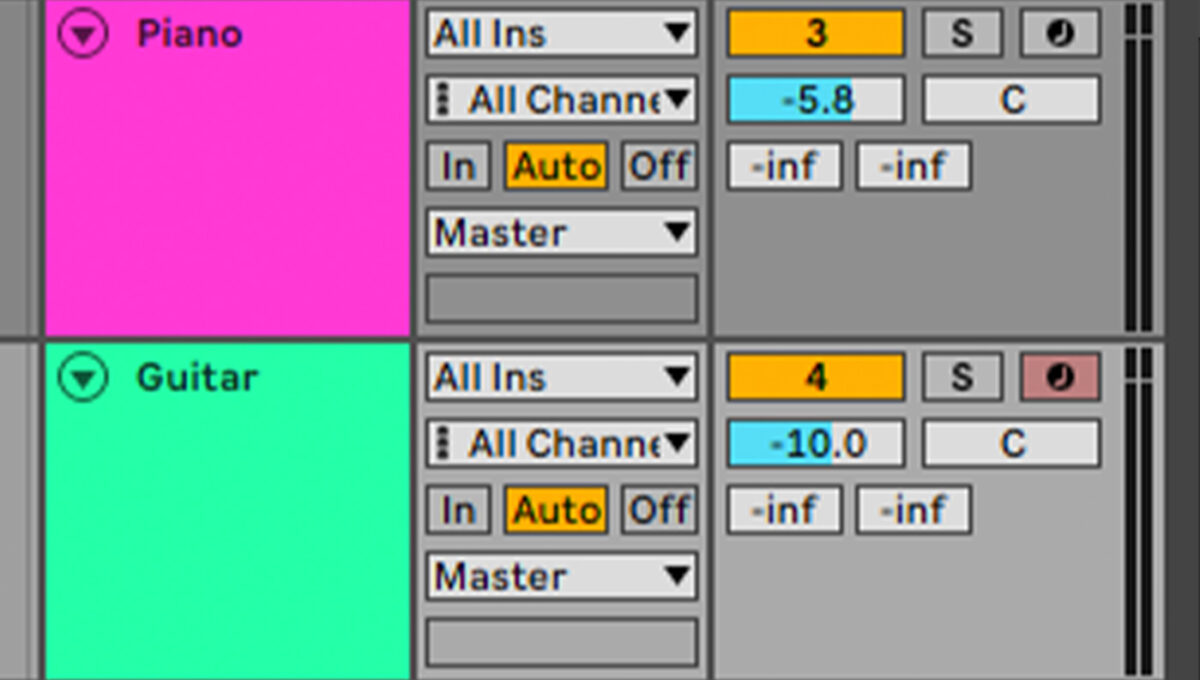
Copy a lead line we’ve used here using a velocity of 70, noting the off-grid timing of the section on the fourth beat of the second bar. This gives the part a more organic, natural sound.
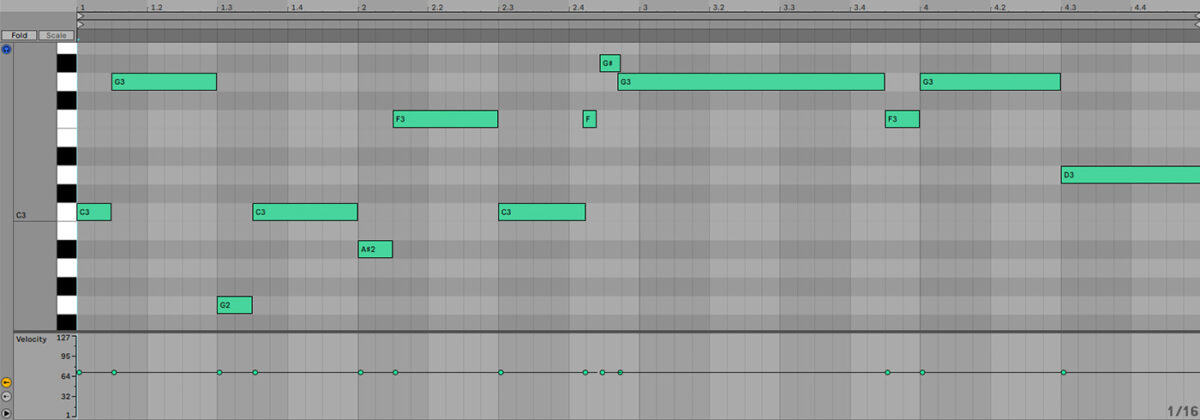
5. Processing
What we have so far sounds cool, but there’s scope to give it a more vintage feel. Group the piano and guitar tracks together.
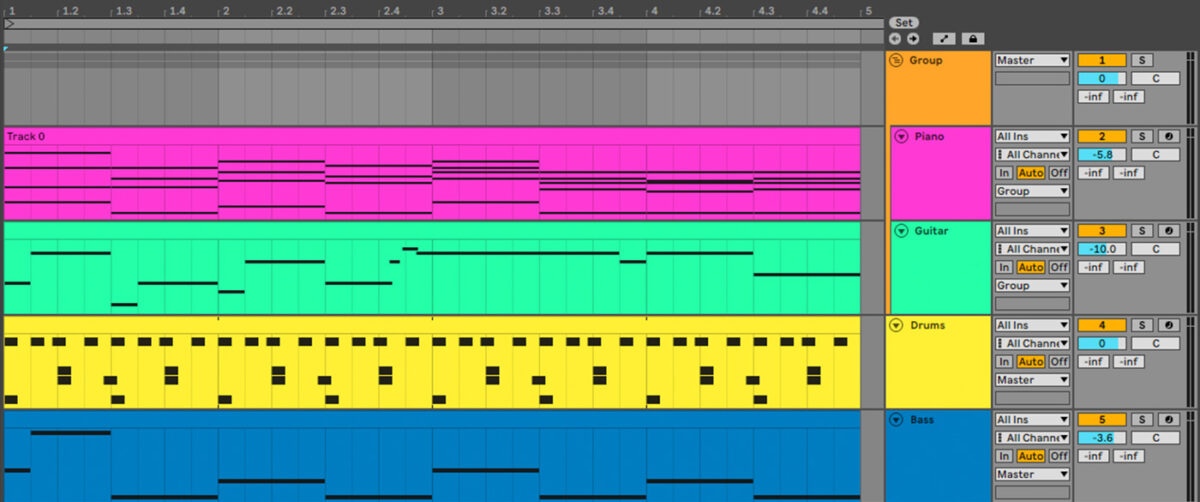
Add iZotope Vinyl to the group track, turning down the Warp fader to the minimum possible, and setting the Wear knob to 93%. This gives us that “sampled from vinyl” feel often heard in jazzy hip-hop.
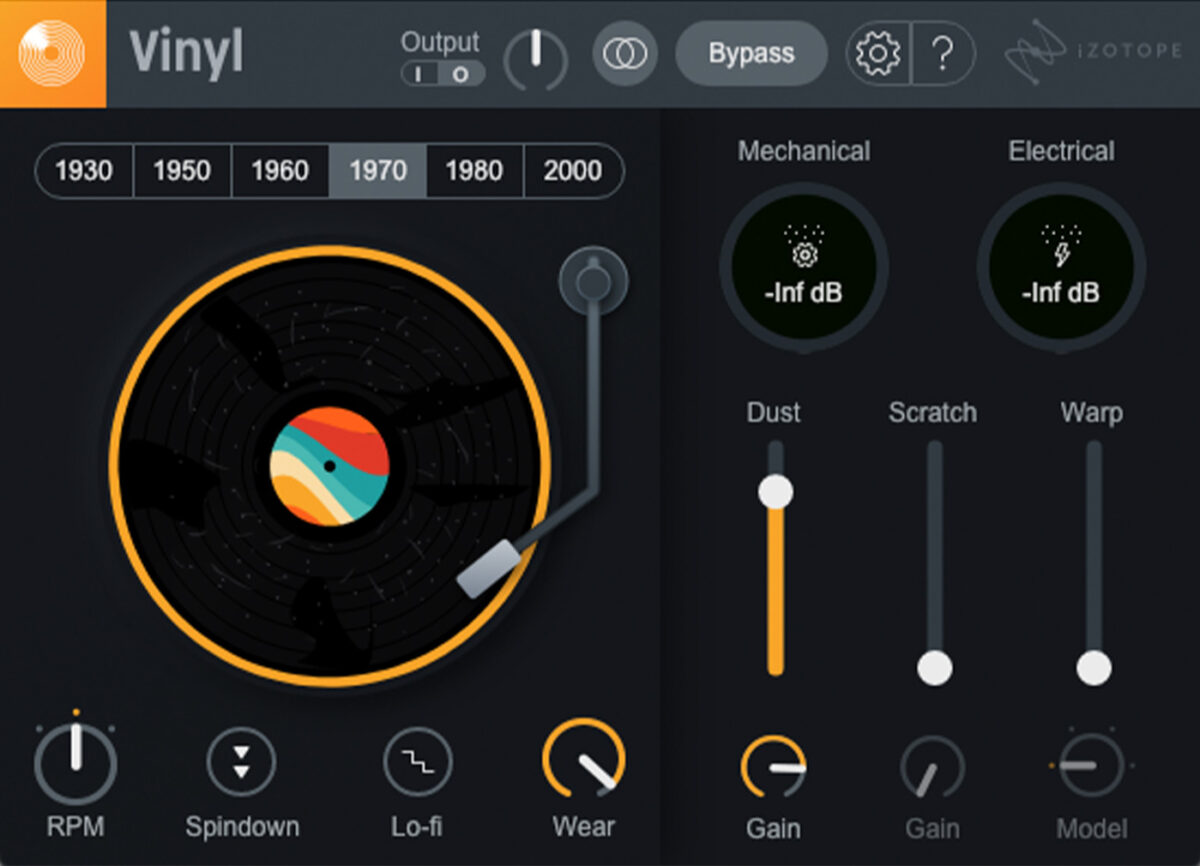
To emulate the sound of early hardware samplers, add a “bitcrusher” effect such as Ableton Live’s Redux after the Vinyl effect. Set the sample rate to 8 kHz, and the bit depth to 12.
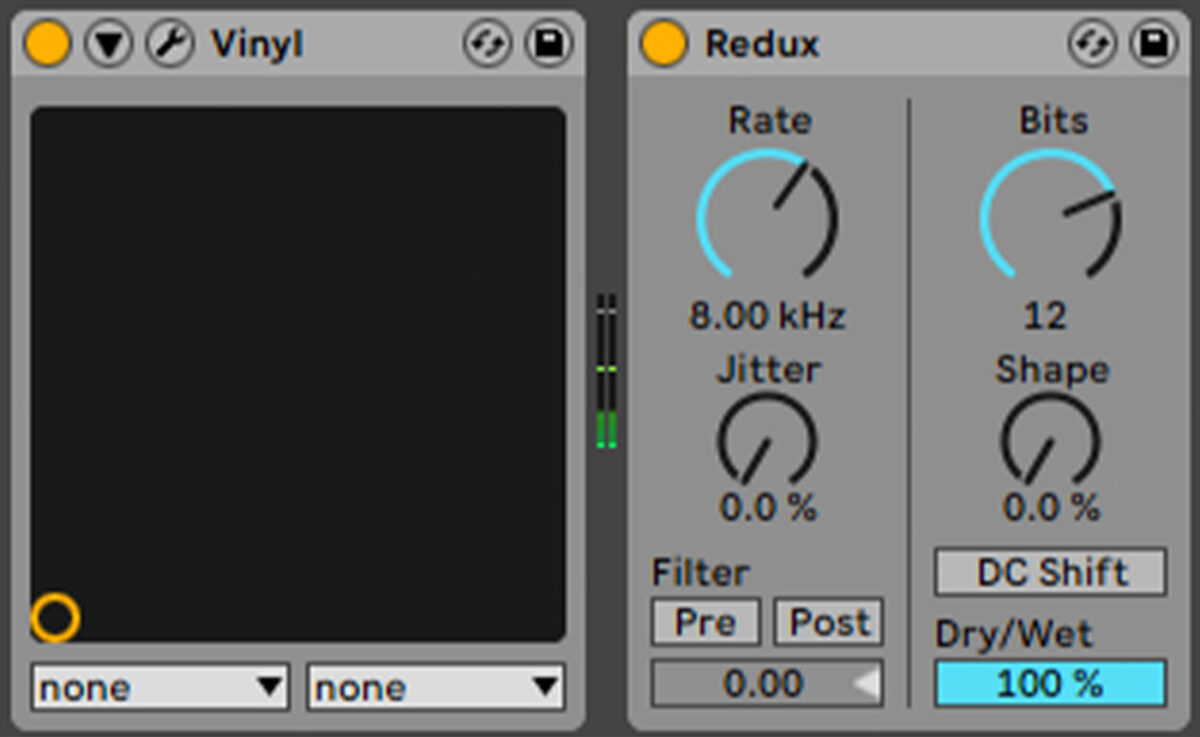
Let’s smooth the guitar out a little. Add a filter effect such as Live’s Auto Filter, and use a low-pass filter with a cutoff of 3.25 kHz. This will dull the top-end of the sound slightly.
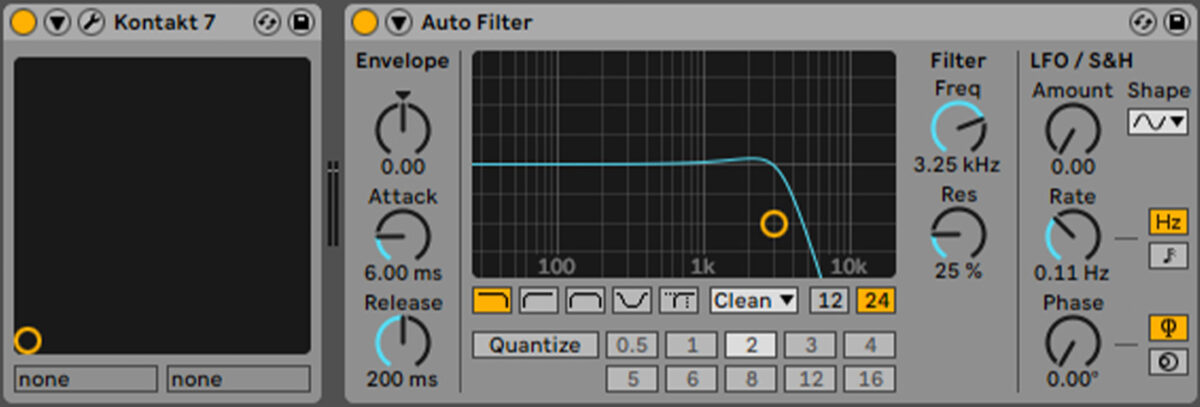
6. Mastering
Let’s make our beat sound louder with some quick mastering. Add iZotope Ozone 10 to the master track, and run iZotope Ozone Master Assistant to get a louder track.
Here’s what the final track sounds like mastered.
Start making jazz rap music
Here we’ve seen how you can make your own jazzy hip-hop beat from scratch. If you’d like to learn more, discover how to write hip hop drum patterns, how to make a beat, and the best sound packs to jazz up your music.
And if you haven’t already, explore KARRIEM RIGGINS DRUMS for yourself and dial-in your hip hop, jazz, and R&B influence in your production’s percussion.















